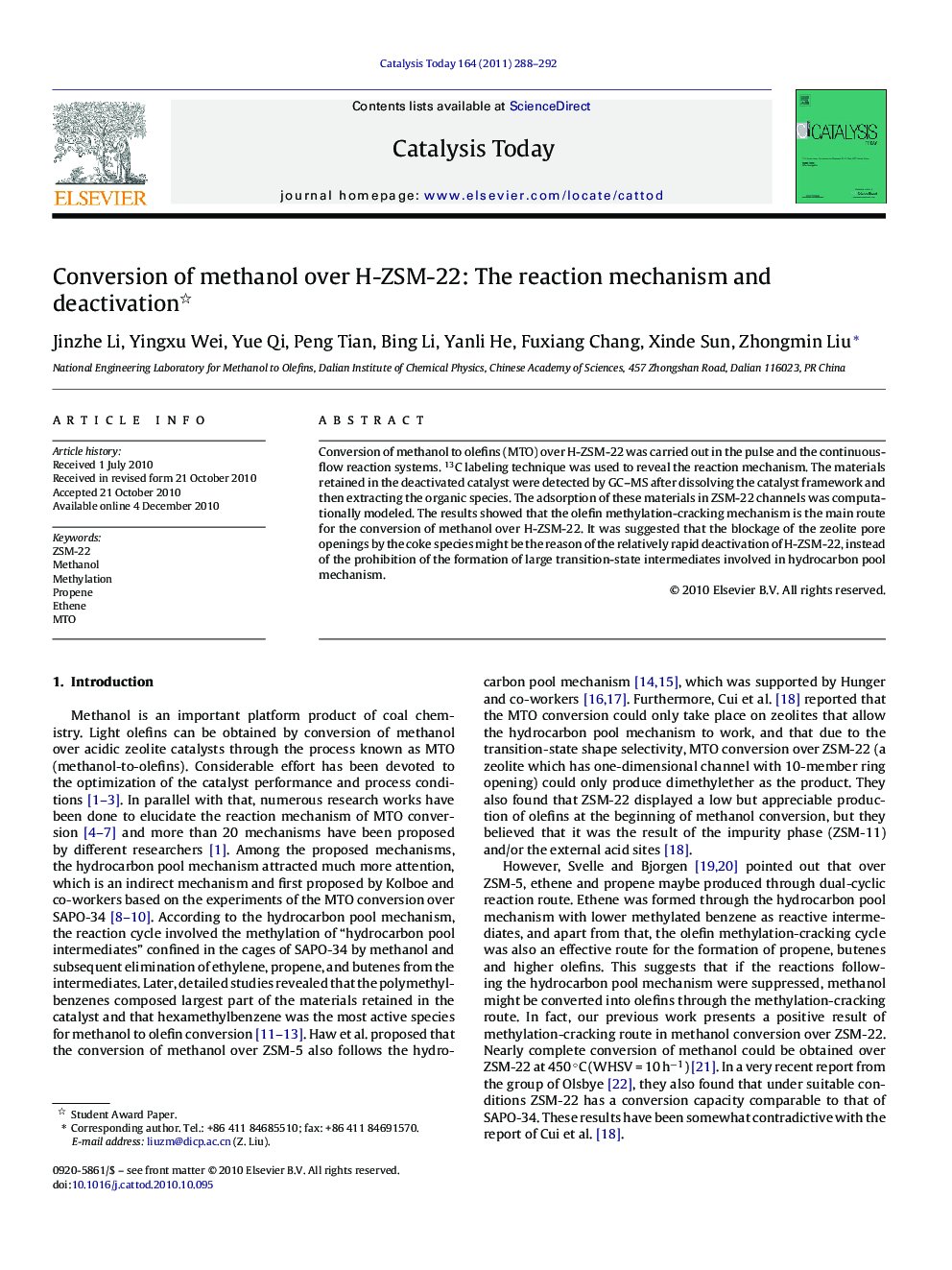| Article ID | Journal | Published Year | Pages | File Type |
|---|---|---|---|---|
| 56338 | Catalysis Today | 2011 | 5 Pages |
Conversion of methanol to olefins (MTO) over H-ZSM-22 was carried out in the pulse and the continuous-flow reaction systems. 13C labeling technique was used to reveal the reaction mechanism. The materials retained in the deactivated catalyst were detected by GC–MS after dissolving the catalyst framework and then extracting the organic species. The adsorption of these materials in ZSM-22 channels was computationally modeled. The results showed that the olefin methylation-cracking mechanism is the main route for the conversion of methanol over H-ZSM-22. It was suggested that the blockage of the zeolite pore openings by the coke species might be the reason of the relatively rapid deactivation of H-ZSM-22, instead of the prohibition of the formation of large transition-state intermediates involved in hydrocarbon pool mechanism.
